https://github.com/lana-20/mitigate-technical-debt-agile
Avoid Technical Debt with the 4 Core Agile Practices
https://github.com/lana-20/mitigate-technical-debt-agile
Last synced: 3 months ago
JSON representation
Avoid Technical Debt with the 4 Core Agile Practices
- Host: GitHub
- URL: https://github.com/lana-20/mitigate-technical-debt-agile
- Owner: lana-20
- Created: 2023-02-08T04:02:48.000Z (over 2 years ago)
- Default Branch: main
- Last Pushed: 2023-02-08T05:05:55.000Z (over 2 years ago)
- Last Synced: 2025-05-29T21:37:20.345Z (5 months ago)
- Size: 33.2 KB
- Stars: 0
- Watchers: 1
- Forks: 0
- Open Issues: 0
-
Metadata Files:
- Readme: README.md
Awesome Lists containing this project
README
# Mitigate Technical Debt with the 4 Core Agile Practices
Refactoring, TDD/BDD, Pair/Mob Programming, and CI - these 4 technical practices can help reduce technical debt and facilitate strong team communication.
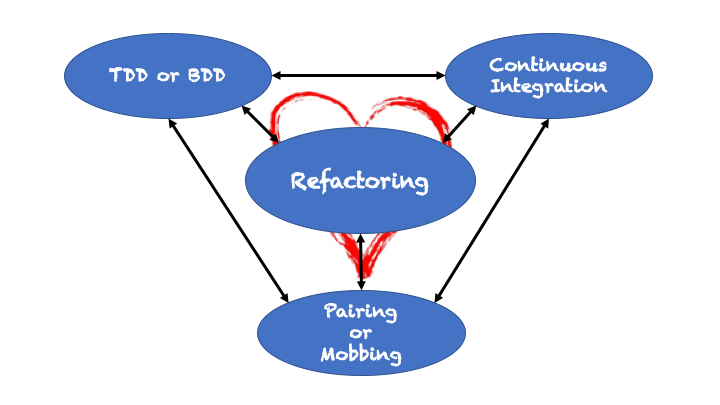
## Understanding Technical Debt
### What is Technical Debt?
Technical debt is a term used to describe the deferment of good software design for the sake of expediency. In simple terms, it means making questionable design choices in order to deliver a product faster. This decision may be conscious, but more often than not, it is unconscious and driven by time constraints.
### Why is Technical Debt a Concern?
The consequences of technical debt can have a significant impact on a company's bottom line. Technical debt can slow down the delivery of future releases or sprint increments, make it more difficult to find and fix defects, and erode good testing practices. These factors can result in increased costs and decreased productivity.
Therefore, it's important to be aware of technical debt and take steps to manage it effectively to ensure the long-term success of a software development project.
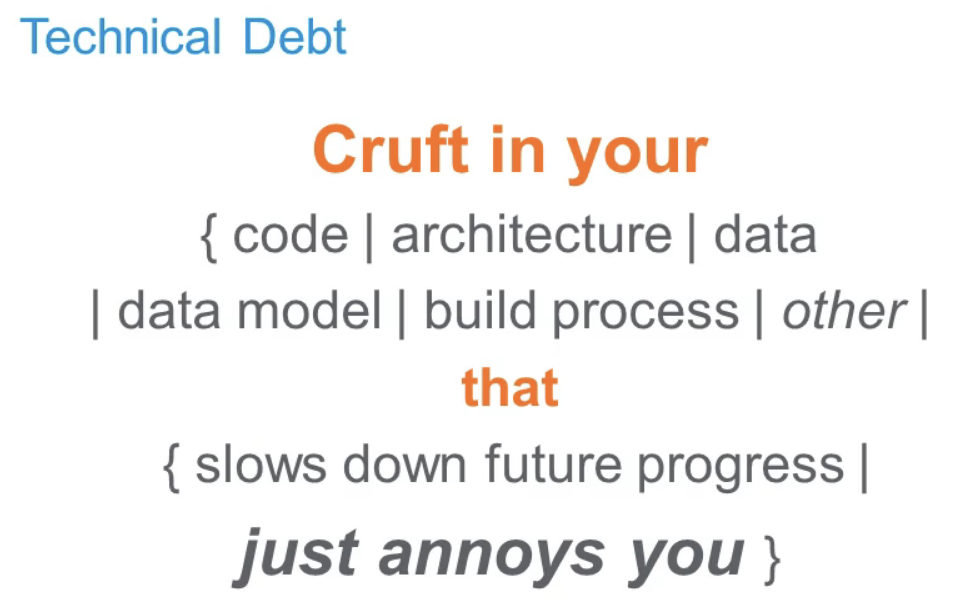
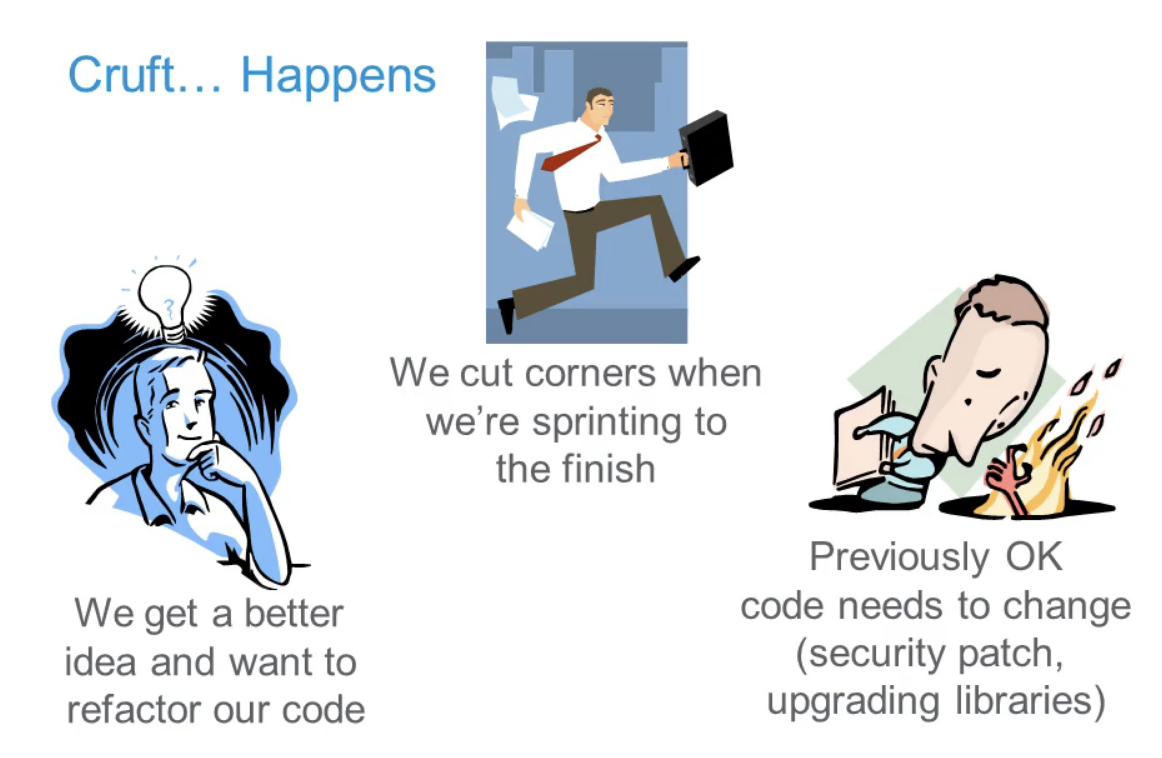
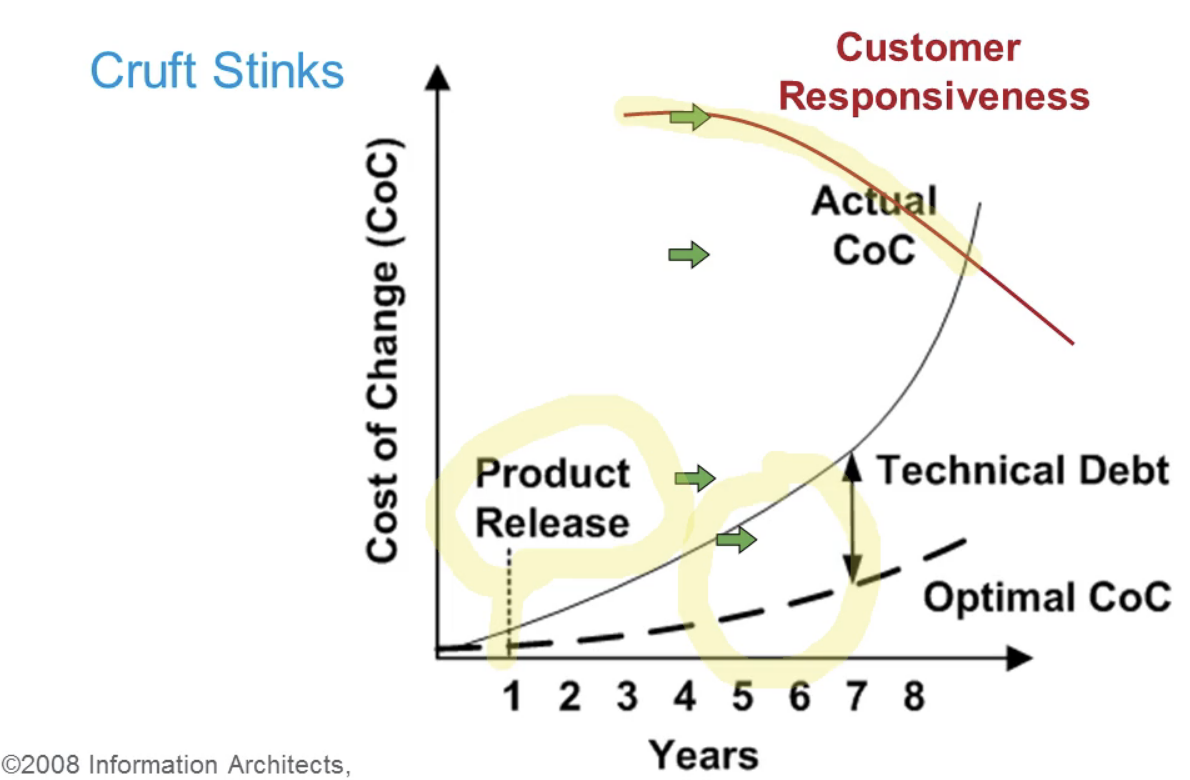
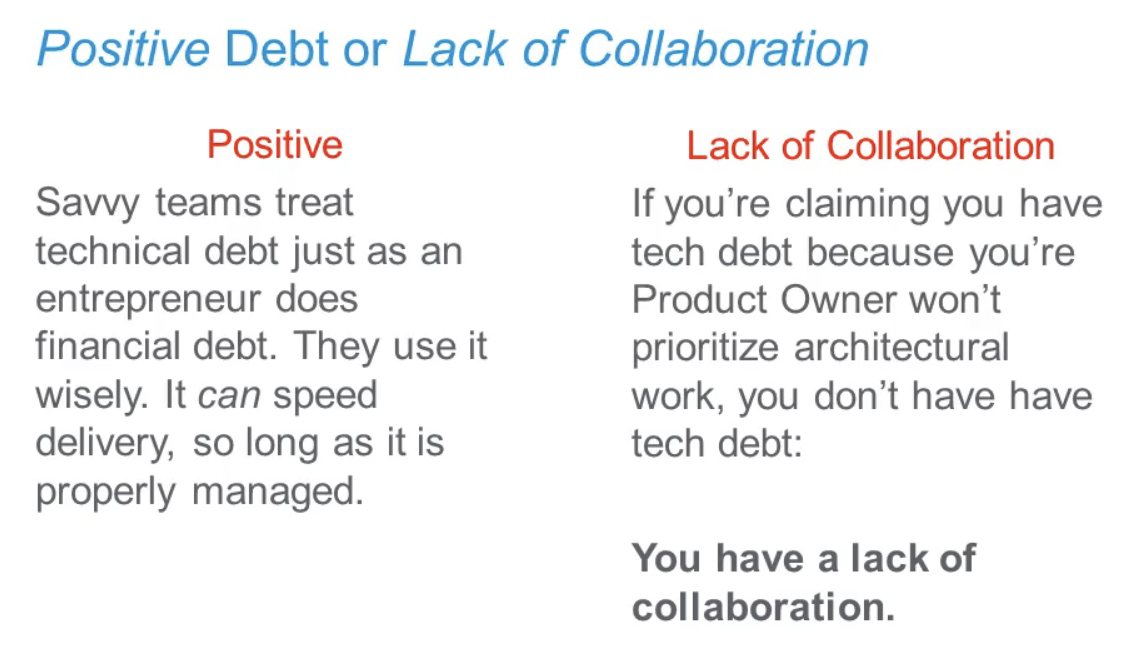
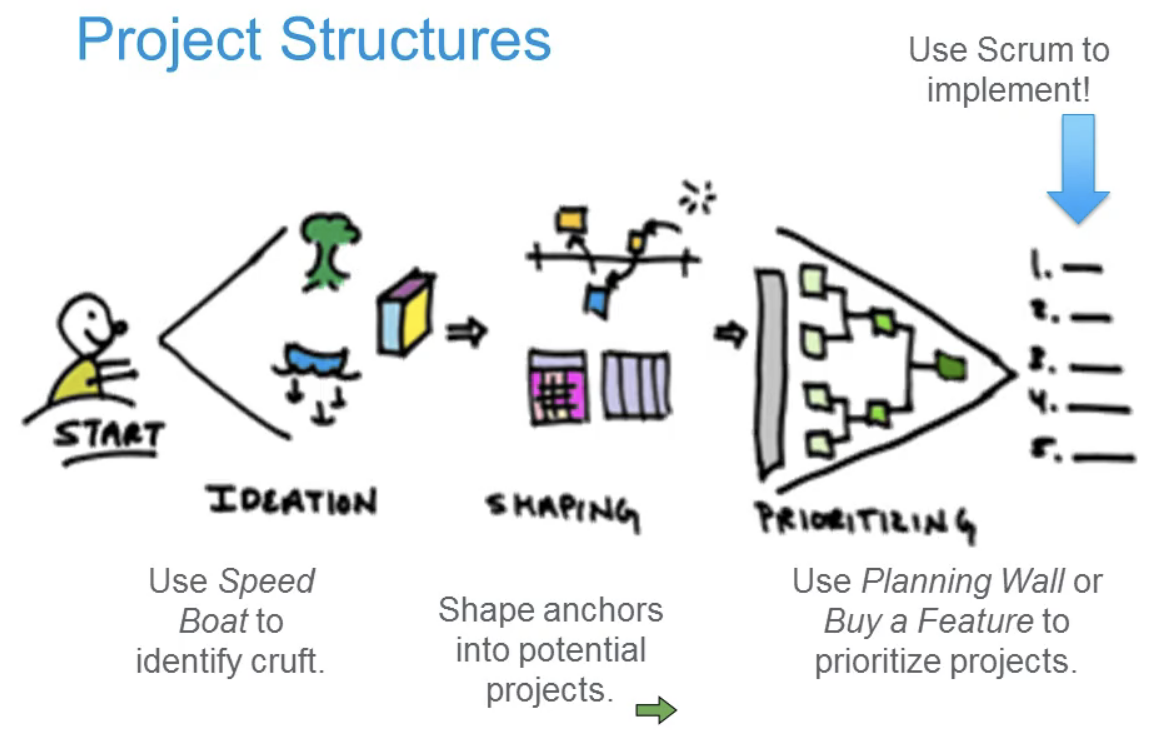
Try these collaboration tools by Scaled Agile:
* [Speedboat](https://collaborate.scaledagile.com/template/try?id=ALL1X3KMJ0NHYGNNSOT0X35EDAKBFAAX)
* [Planning Wall](https://collaborate.scaledagile.com/template/try?id=FPZJ33AZ2FGOIHOLZSNCNZHG2U24CN1K)
* [Buy a Feature](https://collaborate.scaledagile.com/template/try?id=O35E2RMDADPOQXINB2H34LVKOTM2QCW1)
## Understanding Software Design in Software Development
The term "design" is a multi-faceted concept in the software industry, and software design specifically refers to the internal structure of code. Unlike user-interface design, which deals with the appearance of the software, or user-experience design, which focuses on the user's interaction with the software, software design is the domain of software developers.
It is important to note that software design is not a mystical or artistic endeavor, but rather a pragmatic one. A well-designed software should be able to communicate the intent of its behaviors to developers, both present and future, and also enable future enhancements, both planned and unexpected.
Many resources, such as design patterns, exist to help with software design, but at its core, a good software design only needs to achieve these two objectives.
Do we need to get the software design right from the start?
Prior to the adoption of Agile methods such as Scrum and XP, the common practice in software development was to complete the design phase before beginning any other steps in the software development process. However, this method proved to be problematic when it came time for testing, or when the software was handed over to customers.
This is why Agile methods, which emphasize a continuous learning and improvement process, were embraced. The idea is to complete only what is necessary at present, and continuously incorporate new insights as they are gained.
## The Agilist's Dilemma: Navigating the Challenges of Agile Software Development
Agile methodology has become a popular approach to software development, but it's not without its challenges. Many teams find that after the first 5-8 sprints, the process becomes increasingly slow and painful. This phenomenon is what we call the "Agilist's Dilemma."
In software development, it's crucial to maintain and update existing code in order to support new functionality. However, as the codebase becomes more complex, developers are faced with the difficult task of altering their own code without introducing defects. This slow progress can be the result of caution to avoid breaking the code or simply because of the inevitable fallibility of human error.
Similarly, testers also face a dilemma. Initially, it's easy to keep up with new features, but as the codebase evolves and developers make changes, testers are tasked with testing everything every sprint. This becomes increasingly difficult and teams may resort to prioritizing certain tests or testing less frequently, resulting in defects slipping through and impacting the user experience.
These challenges can lead to frustration and a sentiment that "Agile sucks!" However, it's important to understand that the traditional coding and testing techniques used in a gated "waterfall" process are no longer sufficient for highly iterative and incremental approaches. In fact, they can even be counterproductive.
The solution to the Agilist's Dilemma is to adopt development practices that are better suited for a highly iterative and incremental approach and to stop practices that hinder agility. By doing so, teams can overcome the challenges of Agile software development and create a more efficient and effective process.
## Reducing or avoiding technical debt in software development requires specific technical practices.
The main goal is to enhance the functionality of the software without compromising any prior investment in the process. To achieve this, software design needs to be flexible, easy to change and maintain, and most importantly, communicate the intent clearly.
Agile software development supports this goal by continuously reshaping the design to be appropriate for the current functionality and flexible enough for unexpected changes. The core design practice for Agile software development is called “refactoring”. Refactoring is the reshaping of code structure without changing the behavior of the system. This makes it easier to add new functionality to the software.
However, refactoring can only be done safely with a comprehensive and fast automated test-suite. This test-suite provides the necessary confidence that changes made to the code won’t alter existing behavior. Building and maintaining this safety-net requires either Test-Driven Development (TDD) or Behavior Driven Development (BDD) or both. These practices are also known as “test-first” practices as the development process starts with writing a test scenario and then coding to make it pass.
TDD and BDD are crucial for Agile software development teams. They help refine ambiguous requirements into concrete and specific scenarios. TDD is a faster process in the short term as it quickly becomes a technique for developers to think about the decomposition of new behaviors they are adding to the system. In the long term, TDD keeps defects low and leads to a more efficient development process.
In conclusion, the core solution to reducing technical debt is refactoring, and the core practices are TDD and BDD. The “test-first” approach includes testing, incremental design through refactoring, and just-in-time analysis. The safety-net provides the necessary confidence to make swift and confident changes. The cost of these practices might seem expensive upfront, but the savings in rework cost and the ability to adapt to changing market conditions usually pay for it within a year, often within six months.
## The Benefits of Pair and Mob Programming in Agile Development
Agile development is an iterative and flexible approach to software development that places an emphasis on collaboration and communication between team members. One of the key practices that has arisen from this need for collaboration is "Pair Programming" and "Mob Programming" (or "Ensemble Programming" in Europe).
Pair programming is when two developers work together to design, test, and write code. Mob programming is when the entire development team, including product advocates, business analysts, and quality assurance, works together to develop the product in real-time.
Although these practices may seem untenably expensive, there are numerous benefits that far outweigh the costs. Here are some of the key benefits of pair and mob programming:
1. Code is reviewed as it's written, reducing the constraints of code reviews and allowing good ideas to be incorporated immediately.
2. The cross-connectivity of team members allows for the optimal solution to be created instantly, with coding, testing, analysis, and research happening simultaneously.
3. Questions about enhancements are answered immediately, eliminating the need for meetings or guesswork.
4. Everyone on the team is engaged, and rotating roles helps keep everyone involved and focused.
5. Cross-team understanding of the design, technology, and business domain is increased, giving everyone a deeper appreciation for the various skills required for high-quality software development.
6. Pair and mob programming also creates a bond among team members and fosters a more social atmosphere.
Another important aspect of Agile development is Continuous Integration (CI), which is the fourth of the "Core Four" practices. CI ensures that the sprint produces a shippable product increment by integrating all existing features and new user stories from version-control repository branches into a potentially shippable whole. Integrating each pair's work multiple times per day helps keep the repository "trunk" up-to-date and eliminates the potential issues that arise from refactoring.
Pair and mob programming offer numerous benefits for Agile development teams, including improved code quality, better collaboration and communication, and increased engagement and social bonding among team members. When combined with continuous integration, Agile teams are able to deliver high-quality, maintainable software that meets the needs of their customers.
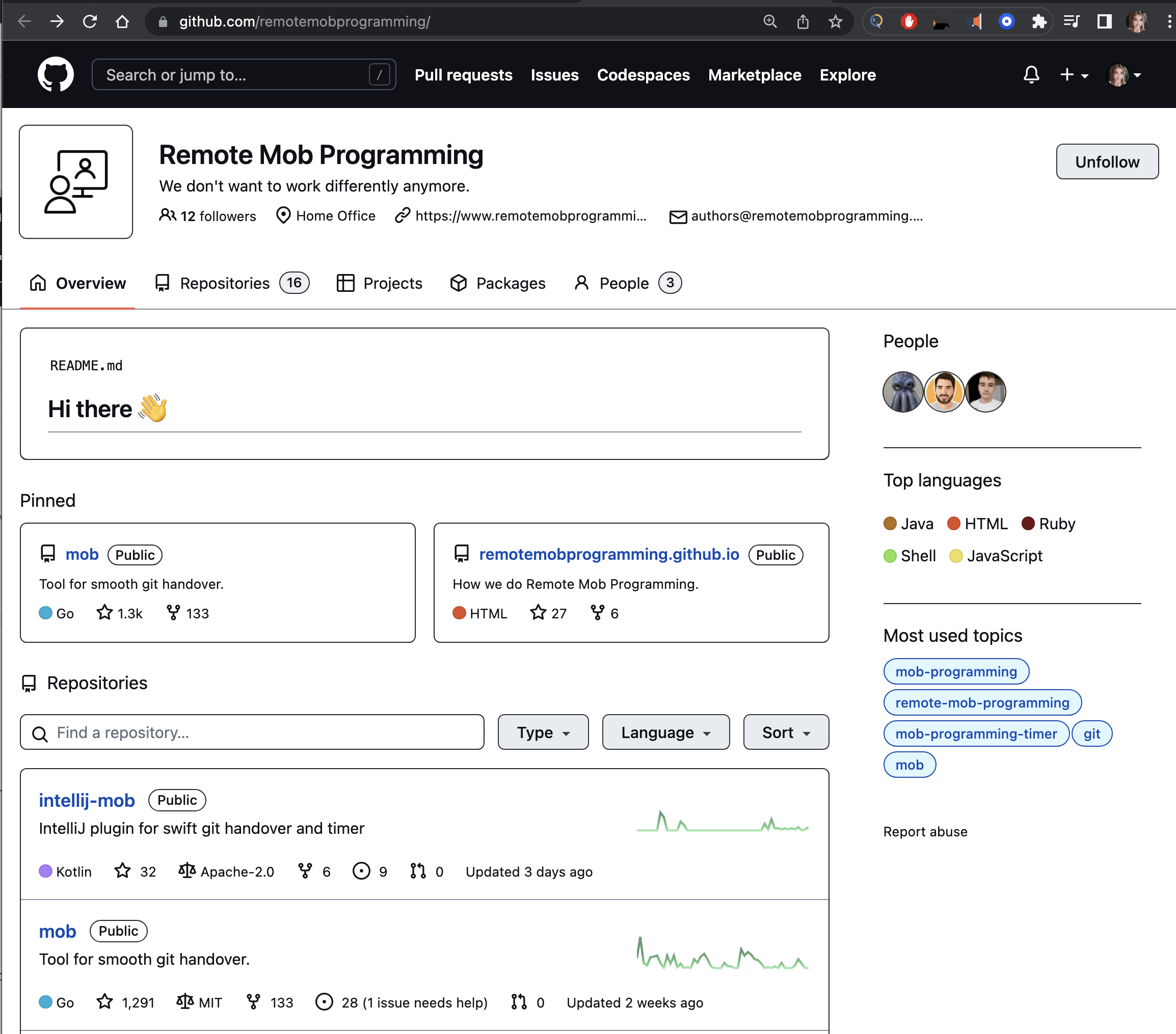
## The Core Four Practices in Software Development Summary
The Core Four practices in software development are crucial to developing software incrementally and effectively. They work well together to create a high-quality software development process.
1. Refactoring:
Refactoring is the cornerstone of the Core Four. It enables software development to be done incrementally and helps to maintain a healthy development process. The other three practices support refactoring, making it possible to develop software effectively.
2. TDD or BDD:
TDD (Test-Driven Development) or BDD (Behavior-Driven Development) is the second practice in the Core Four. These practices create a safety net that protects the investment in existing behaviors while adding new behaviors and refactoring the code. By doing so, the development process becomes more confident and swift.
3. Pair/Mob/Ensemble Programming:
The third practice in the Core Four is Pair/Mob/Ensemble Programming. This practice allows continuous collaboration and dialogue between the team members regarding enhancement requests, design, and quality. As a result, feedback loops become shorter, and the code is reviewed continuously, avoiding rework and embarrassment.
4. Continuous Integration:
The fourth and final practice in the Core Four is Continuous Integration. This practice ensures that important enhancements and refactorings are secured and distributed to the rest of the team. It also avoids the merge conflicts that often occur before testing or delivery.
### Facilitating Strong Team Communication:
An interesting aspect of the Core Four practices is that they facilitate strong team communication. By following these practices, the design becomes understandable, readable, clear, and straightforward, and can be changed easily. Test-first practices communicate what the software does, while the code communicates how it does it. Collaborative practices like pairing and mobbing promote instant communication and confirmation, shortening feedback loops. Continuous Integration distributes the latest changes to the team, avoiding merge conflicts.
### Technical Debt:
The notion that one must choose between rushing to market and designing for the future is a false choice. The value of the Core Four practices is both immediate and ongoing, and technical debt is typically not as valuable as people assume. Once the team has experience with these techniques, it takes no additional time to use a paired test-first technique to think about what the code is solving and refactor as needed. This results in the best return on investment for the product.
### ∴ Conclusion:
The Core Four practices in software development are crucial for developing software incrementally and effectively. These practices create a high-quality software development process, facilitate strong team communication, and provide the best return on investment for the product.